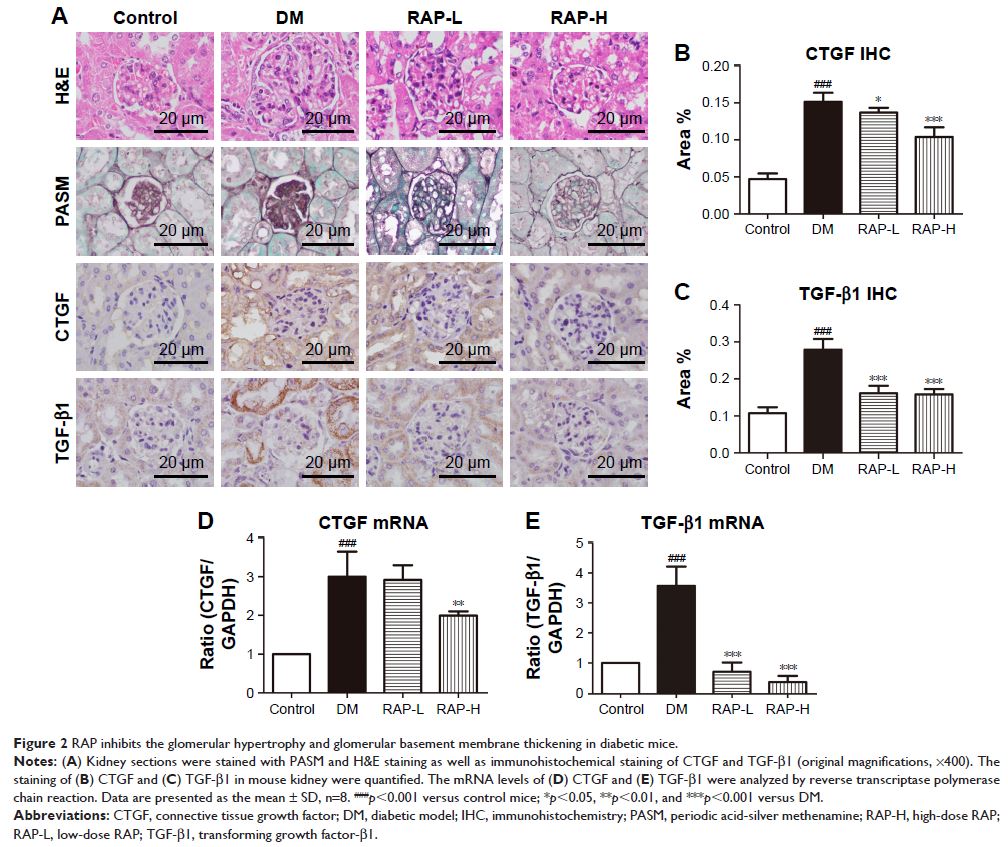9 0 8 0 2
论文已发表
注册即可获取德孚的最新动态
IF 收录期刊
- 2.6 Breast Cancer (Dove Med Press)
- 3.9 Clin Epidemiol
- 3.3 Cancer Manag Res
- 3.9 Infect Drug Resist
- 3.6 Clin Interv Aging
- 4.8 Drug Des Dev Ther
- 2.8 Int J Chronic Obstr
- 8.0 Int J Nanomed
- 2.3 Int J Women's Health
- 3.2 Neuropsych Dis Treat
- 4.0 OncoTargets Ther
- 2.2 Patient Prefer Adher
- 2.8 Ther Clin Risk Manag
- 2.7 J Pain Res
- 3.3 Diabet Metab Synd Ob
- 4.3 Psychol Res Behav Ma
- 3.4 Nat Sci Sleep
- 1.9 Pharmgenomics Pers Med
- 3.5 Risk Manag Healthc Policy
- 4.5 J Inflamm Res
- 2.3 Int J Gen Med
- 4.1 J Hepatocell Carcinoma
- 3.2 J Asthma Allergy
- 2.3 Clin Cosmet Investig Dermatol
- 3.3 J Multidiscip Healthc

菜籽蛋白衍生抗氧化肽 RAP 通过 MAPK/NF-κB 信号通路在糖尿病肾病中缓解肾纤维化
Authors Zhang M, Yan Z, Bu L, An C, Wang D, Liu X, Zhang J, Yang W, Deng BC, Xie J, Zhang B
Received 11 January 2018
Accepted for publication 14 March 2018
Published 15 May 2018 Volume 2018:12 Pages 1255—1268
DOI https://doi.org/10.2147/DDDT.S162288
Checked for plagiarism Yes
Review by Single-blind
Peer reviewers approved by Dr Cristina Weinberg
Peer reviewer comments 2
Editor who approved publication: Dr Tuo Deng
Introduction: Kidney fibrosis is the main pathologic change in diabetic
nephropathy (DN), which is the major cause of end-stage renal disease. Current
therapeutic strategies slow down but cannot reverse the progression of renal
dysfunction in DN. Plant-derived bioactive peptides in foodstuffs are widely
used in many fields because of their potential pharmaceutical and nutraceutical
benefits. However, this type of peptide has not yet been studied in renal
fibrosis of DN. Previous studies have indicated that the peptide YWDHNNPQIR
(named RAP), a natural peptide derived from rapeseed protein, has an
antioxidative stress effect. The oxidative stress is believed to be associated
with DN. The aim of this study was to evaluate the pharmacologic effects of RAP
against renal fibrosis of DN and high glucose (HG)-induced mesangial
dysfunction.
Materials and
methods: Diabetes was induced by
streptozotocin and high-fat diet in C57BL/6 mice and these mice were treated by
subcutaneous injection of different doses of RAP (0.1 mg/kg and 0.5 mg/kg,
every other day) or PBS for 12 weeks. Later, functional and histopathologic
analyses were performed. Parallel experiments verifying the molecular mechanism
by which RAP alleviates DN were carried out in HG-induced mesangial cells
(MCs).
Results: RAP improved the renal function indices, including 24-h
albuminuria, triglyceride, serum creatinine, and blood urea nitrogen levels,
but did not lower blood glucose levels in DN mice. RAP also simultaneously
attenuated extracellular matrix accumulation in DN mice and HG-induced MCs.
Furthermore, RAP reduced HG-induced cell proliferation, but it showed no
toxicity in MCs. Additionally, RAP inhibited the mitogen-activated protein
kinase (MAPK) and nuclear factor κB (NF-κB) signaling pathways.
Conclusion: RAP can attenuate fibrosis in vivo and in vitro by antagonizing
the MAPK and NF-κB pathways.
Keywords: antioxidant peptide, RAP, diabetic nephropathy, extracellular
matrix, kidney fibrosis, MAPK, NF-κB
